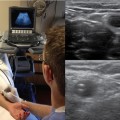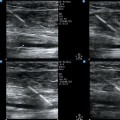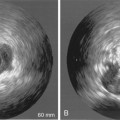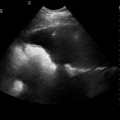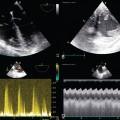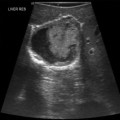15 At the beginning of this century, the widespread use of ultrasound for guiding vascular access has dramatically changed the technique of insertion of PICCs.1–6 Currently, PICCs are inserted by ultrasound-guided puncture and cannulation of the deep upper arm veins (most often the basilic or brachial vein) via the modified Seldinger technique (venipuncture with a small-gauge needle, insertion of a thin guidewire through the needle, removal of the needle, insertion of a microintroducer-dilator over the guidewire, removal of the wire and dilator, insertion of the catheter through the introducer). This technique facilitates catheterization of large-bore veins of known diameter and trajectory while allowing positioning of the exit site in the upper part of the arm (halfway between the elbow and the axilla). As a final result, the rate of insertion failure is minimal, insertion-related complications are almost negligible, the exit site is handled easily by patients and nursing stuff (easy dressing and securement, good patient comfort), and the rate of late complications (infection, catheter-related venous thrombosis, dislocation) is low. PICCs are usually inserted in the deep veins of the arm, which allows an exit site in the middle third of the upper part of the arm. Sometimes the only veins available for cannulation (in terms of diameter) are quite close to the axilla. In such cases the catheter can be tunneled downward to obtain a more favorable exit site. The deep veins of the forearm should not be considered for PICC insertion; however, these veins can be used for ultrasound-guided insertion of peripheral lines. The most frequently accessed vein is the basilic vein, which runs in the groove between the humerus and the biceps muscle. This vein usually has a large diameter (4 to 6 mm) and is located rather superficially (10 to 25 mm from the surface of the skin) and relatively distant from arteries and major nerves. The brachial veins are an alternative option. Their number may range between two and four, and they generally travel close to the brachial artery and the median nerve (which is typically located adjacent to the artery; see Chapter 51). The brachial veins are smaller (with diameters ranging from 1 to 4 mm) and usually travel medially and deeper than the basilic vein; however, anatomic variations are numerous. When visualized sonographically in a transverse plane, the artery and the two adjacent basilic veins appear to have a “Mickey Mouse”–like configuration. Because of their diameter and proximity to structures such as the brachial artery and the median nerve, the basilic veins are not a primary option for catheterization. Sonographic visualization of all arm veins in a transverse plane is relatively easy and facilitates a “panoramic” view of all adjacent anatomic structures (e.g., nerves, arteries, muscles) in a region of interest (ROI). The importance of this “panoramic” view is analyzed elsewhere according to the holistic approach ultrasound concept (Chapters 1 and 51). When transducer compression is applied to an ROI, a vessel that pulsates is an artery, whereas a vessel that does not pulsate and is noncollapsible is most likely a thrombosed vein (Chapter 9).
Ultrasound-guided placement of peripherally inserted central venous catheters
Overview
Ultrasound anatomy of the arm veins
![]()
Stay updated, free articles. Join our Telegram channel

Full access? Get Clinical Tree


Radiology Key
Fastest Radiology Insight Engine

